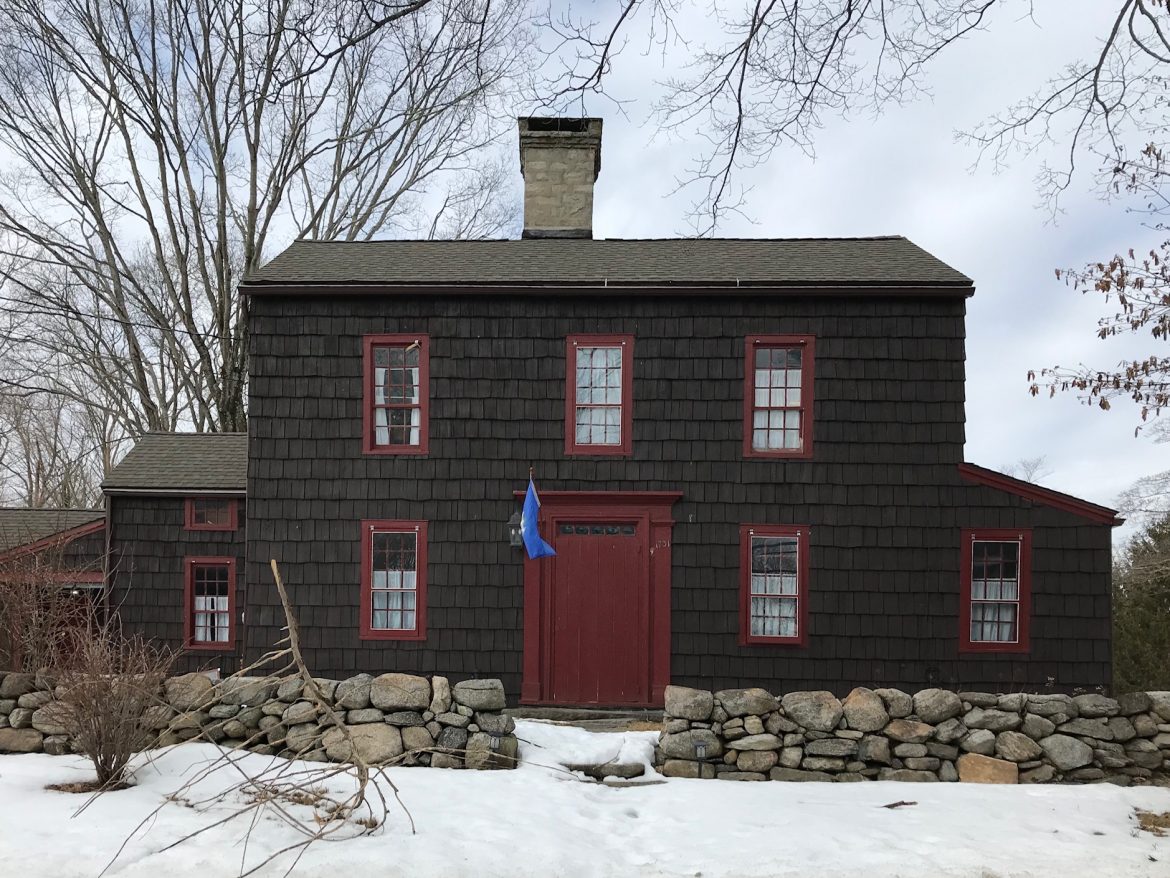Saying the property is to be sold, the owners of an antique house on Ferris Hill Road last week filed papers in state Superior Court seeking to evict its tenant.
The tenant since April 2017 has occupied the 1735-built farmhouse at 8 Ferris Hill Road under an oral month-to-month lease, according to a complaint filed on behalf of the property’s owners by attorneys Marc Genier and Joseph DaSilva Jr. of Norwalk-based DePanfilis & Vallerie, LLC.
She’s been paying $900 in monthly rent, according to the complaint, filed Feb. 9.
On Jan. 27, the plaintiffs advised her that the rental agreement would not be renewed after Jan. 31, the complaint said. On Feb. 3, they served her with eviction papers, it said.
“Although the time designated in the Notice to Quit Possession of the premises has passed, the defendant still occupies the premises,” the complaint said.
The plaintiffs listed in the Connecticut Judicial Branch include owners Emily and Tom Nissley, as well as a New Canaan resident who intends to buy the property and make it her primary residence, according to the complaint.
The home made headlines five years ago when its then-owner filed for a demolition permit. Local preservationists mobilized and formally objected to the demolition, securing a 90-day delay from an appointed town committee. Ultimately, the very week the home was slated for demolition, the Nissleys entered into a contract purchase agreement with the owner, saving the structure. They paid $1.5 million, tax records show, and said at the time that they intended to rent it out for several years prior to selling it on to someone who would also seek to preserve it.
An application that went into the Connecticut Commission on Culture and Tourism to include the home on the CT State Register of Historic Places called it significant “for its contribution to the settlement of New Canaan, Connecticut.”
The application continued: “According to a history written in 1947, the land upon which the home stands was a portion of a large division belonging to the sons and nephews of Joseph Hoyt,” the application said. “This tract included approximately all of the Canoe Hill road from where it leaves Carter Street, East, West, and North into Laurel Road.
“The Hoyts represent the beginning of a movement to resist the long commute from Norwalk or Stamford for church services. To cut down on travel time, a congregation was organized and named Canaan Parish. “The town of New Canaan grew from this congregation and was chartered in 1889. The New Canaan Historical Society’s survey suggests that there are only six other residences built before the Hoyt-Burwell-Morse House that are still standing. A generation of Hoyts built their homes along the ridge where the Hoyt-Burwell-Morse House now sits on and it became known as ‘House Ridge.’ This home is all that is left to show of this settlement and movement.
“Between the creation of the home and the town’s establishment, the house was occupied by several noteworthy families, mostly descendants of the first settlers of ‘House Ridge.’ These settlers had significant names to the successful creation of New Canaan such as, the Hoyts, the Benedicts, the Burwells, Carters and the Steven. Many of these names are tied to key social, political or economic leaders for the growing area. Some were founders of the Canaan Parish, soldiers, pioneers or businessmen.
“A town historian also believes the house was once occupied by Onesimus Comstock, a man born into slavery in New Canaan in 1761 and said by some to be the last living slave in Connecticut. Comstock had identified himself as a “voluntary slave” in the 1850 census for Norwalk and is buried in the nearby Canoe Hill Cemetery. He died at age 97 in 1857.
“The home continued to house the town’s significant families well beyond the time the town was chartered in 1889. This can be seen even in the landscape surrounding the home. Gilbert Birdsall, who owned the third avenue street railway line in New York purchased the house for his daughter upon marrying Franklin Stevens and the two planted sugar maples in the front yard which can still be seen. These were called ‘Bridal Maples’ and were commonly planted when a young couple went to live in their new home.”
[Note: Comments are disabled on this article.]
